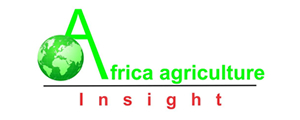The complexity of mitigating the human safety and environmental risk of the natural gas infrastructure (natural gas is at least 90% methane) and the release of both man-made and natural methane continues to increase especially as economic forces limit resources. The economics and detection reliability of laser-based methane sensors have been proven in the field for 20 years with the cost of operation, the ease of use, and the portability continually improving. A significant advantage of laser-based methane sensors is the ability to measure potentially hazardous areas at a distance from a safe position. Pergam Technical Services is currently equipping thousands of firefighters in the USA with the Laser Methane Mini hand-held laser-based methane detector. The Laser Methane Mini gives the firefighters, who are the first to respond to a natural gas leak, the ability to efficiently and effectively detect the natural gas from 100ft/30m instead of the risky distance of 6ft/2m with the previous gas detectors. A special UAV version of the Laser Methane Mini called the LMC has the ability to record the gas concentration levels and the GPS position simultaneously.
The LMC provides all the benefits of the hand-held detector with the ability to also be mounted on a UAV for inspections of natural gas facilities and infrastructure, and landfills/garbage dumps. The methane emissions from landfills/garbage dumps continue to be in general an uncontrolled risk. During a natural gas pipeline inspection demonstration, Pergam-Suisse flew over a landfill finding enough methane emissions to heat over 100 homes and was over one thousand times the size of the artificial test leak. In contrast, the small artificial test leak required extensive safety planning, permission documentation, and safety resources. The landfill company did not have the knowledge or tools to mitigate this hazard despite their staff wearing personnel gas detectors.
Pergam-Suisse continues to work with the UAV community and on sensor development to reduce the total cost of inspecting landfills/garbage dumps with the goal of achieving economics enabling at least 3 inspections per day to effectively monitor the safety risk and be able to control then use the methane emissions. Pergam-Italy is starting to implement 24/7 natural gas facility scanning methane detection for both human safety and methane emission control at sites around Italy dramatically reducing the safety risk to the surrounding community.
Pergam-Italy and Pergam-Suisse have developed new small-scale versions of their successful vehicle roof and bumper-mounted natural gas detection systems used worldwide. In Australia, the bumper-mounted natural gas detection system detected a residential leak nearly 100ft/30m away while simply driving down the street. The SELMA Roof-Mini effortlessly mounts to a vehicle’s roof providing mobile, elevated, user-controlled pan and tilt natural gas inspection capability with a range of 150ft/50m while traveling at speeds of 30 miles per hour or 50 km/h. The bumper system, known as the SELMA MPB-Mini, detects the trace amounts of natural gas that seep out through cracks in the road or sidewalks from underground leaks while traveling at speeds of 20 miles per hour or 30 km/h. The SELMA MPB-Mini can then be disconnected from the bumper-mounted tubing system and used as a hand-held device to localize the leak or to inspect other natural gas infrastructure. Pergam-Suisse and sister companies in the USA (PergamTechnical Services) and in Italy (Pergam-Italy) have over the past 15 years enabled customers to radically diminish the risk of natural gas operations and will continue to do so long into the future.













